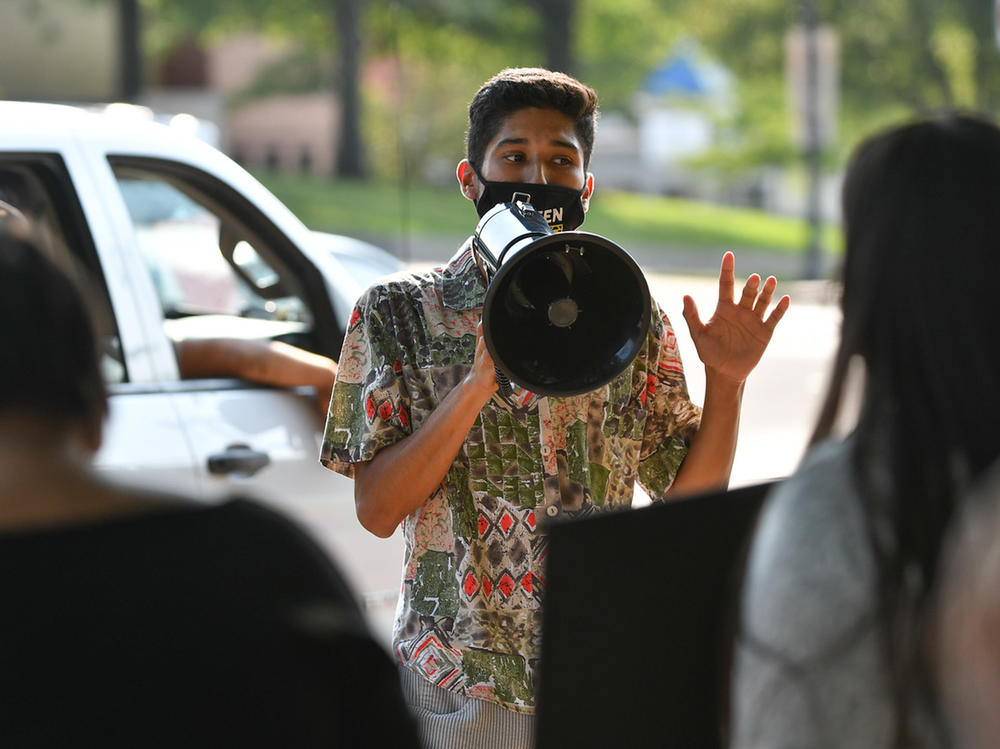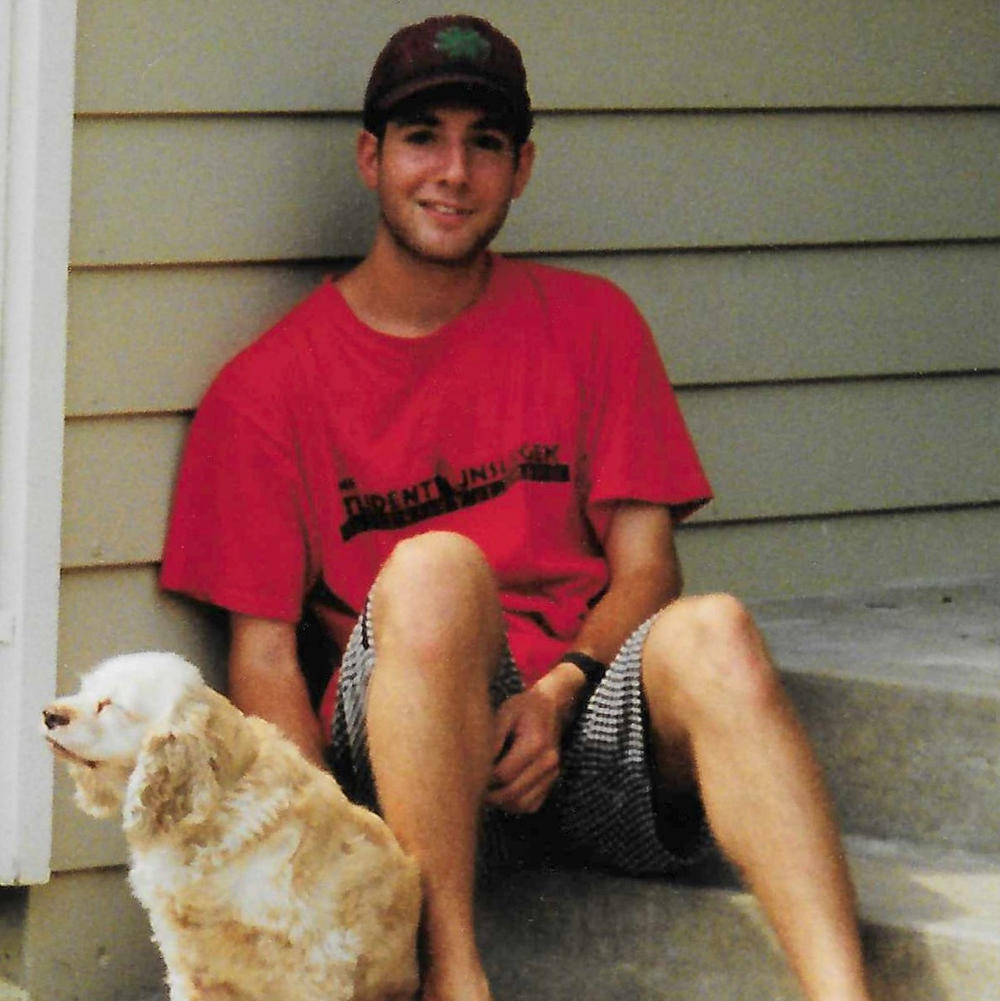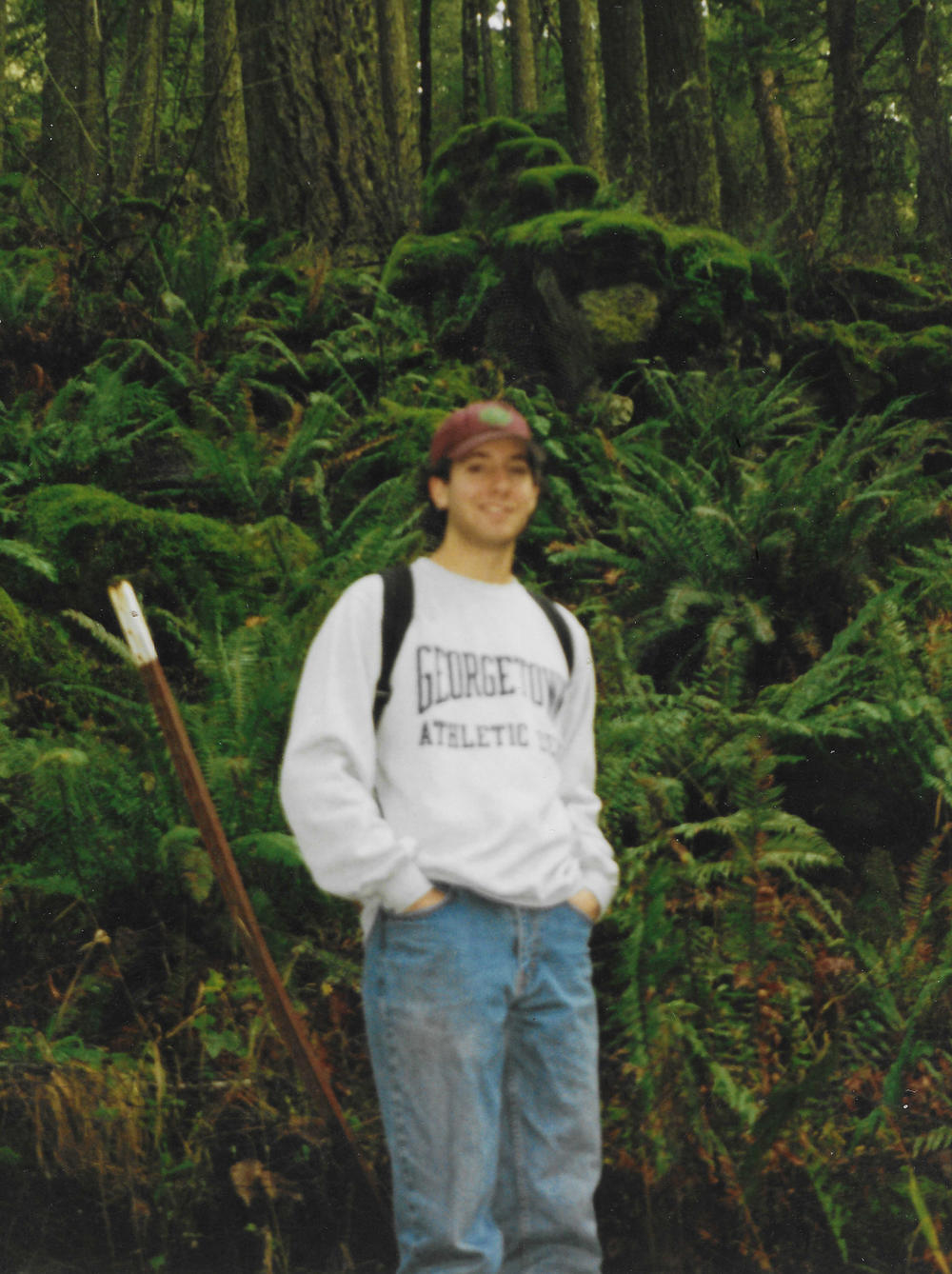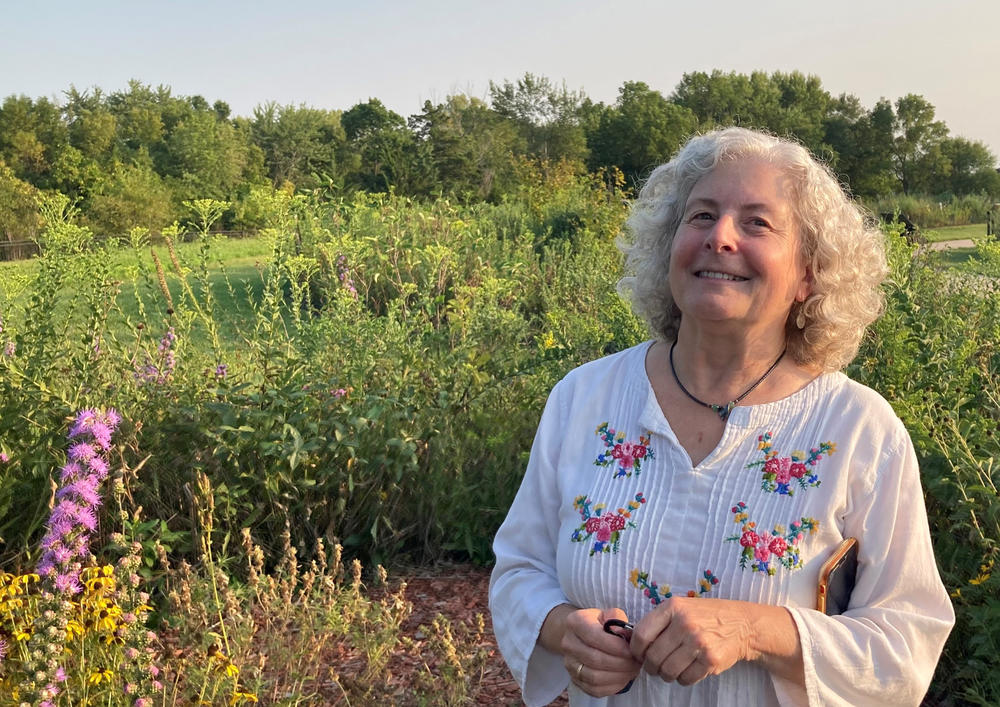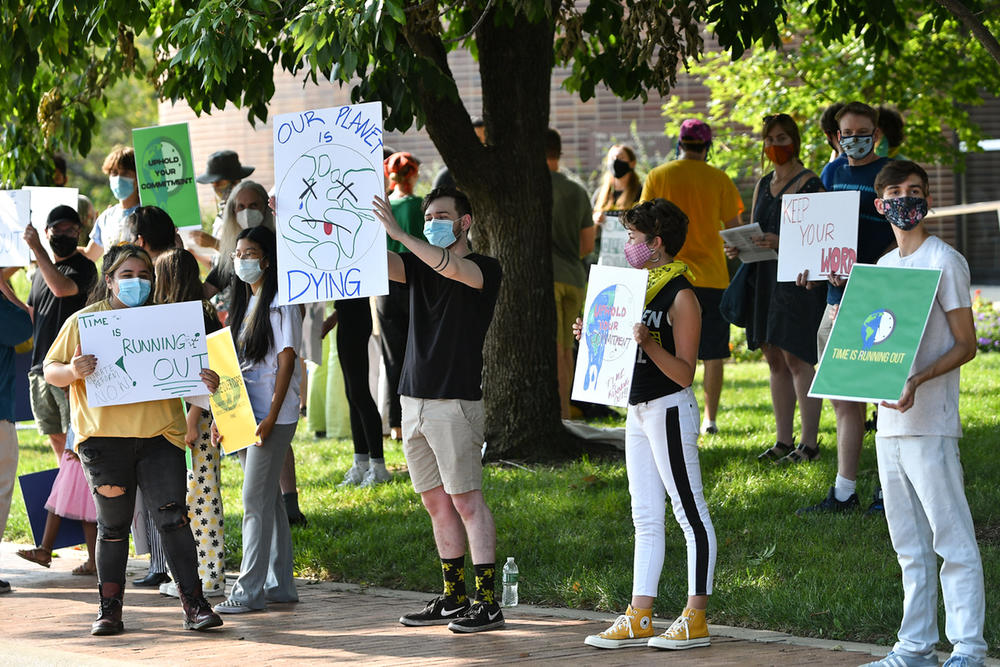Section Branding
Header Content
As climate worsens, environmentalists also grapple with the mental toll of activism
Primary Content
When I was growing up in the '90s in Johnson County, Kansas, in the suburbs of Kansas City, I had a friend named Kevin Aaron who was a dedicated environmentalist.
To strangers, Kevin appeared to be a laid-back punk rock music fan with a dry and slightly mischievous sense of humor, but those of us who knew him best saw his passion for sustainability blossom during high school.
In his barbeque-obsessed hometown, he became the rare vegetarian, driven by the impact of large-scale meat production on the environment. He eagerly researched and then adopted other individual practices — like driving a hybrid car — that he thought might reduce carbon emissions, if only by tiny measures.
What I loved about Kevin was that he believed in the better angels of our nature. Instead of trying to shout down perceived enemies, he tried to convince everyone to be part of the solution to climate change.
In the early 2000s, Kevin was living in the Bay Area and preparing for a career in climate advocacy. He was enrolled in a Master's program in City and Regional Planning at UC Berkley while concurrently studying for a law degree at UC Hastings College of the Law.
But during his graduate studies, he became overwhelmed by a sense of hopelessness about the climate. He died by suicide in 2003, at the age of 27.
Kevin's loss remains a shock for me, and the others who cared about him — especially his mother, Sami Aaron.
As wildfires, floods and other climate disasters unfolded this summer, I found myself thinking about Kevin and his struggles, and wondering what he might have thought about the state of the world today.
Although I hadn't seen his mother, Sami Aaron, in years, I heard through friends that she had become increasingly involved in environmental advocacy. So I called her up, and she invited me for a walk through a native wildflower sanctuary in Olathe, Kansas, called Pollinator Prairie. It's a former Superfund site that a coalition of naturalists and environmentalists helped convert into a flower-filled sanctuary, a home to bees and butterflies.
Sami Aaron often turns to nature for refuge, and she deliberately picked this spot for us to talk about her son. She says that the more deeply Kevin became involved in environmental activism, the more his thinking about the future turned pessimistic — his mind and mood overtaken by despairing thoughts, like an invasive species.
"There was one little seed that was planted where he couldn't then quit thinking about it," she says.
It was a feeling of doubt that his efforts — that all the combined environmental struggles — just wouldn't be enough. It added to the depression he was already struggling with.
"So that seed sprouted a little bit more and a little bit more and a little bit more. And at some point, there was this whole forest of eucalyptus trees in his metaphoric mind — that it just wasn't going to make a difference."
After Kevin died, Aaron found some solace in yoga and meditation, but continued to see her grief as a private struggle. Until a few years ago, when she met some environmentalists in the Flint Hills of Kansas who also struggled with mental health issues.
Aaron wanted to teach these advocates the coping strategies she had learned following her son's death, so she created the Kansas City-based nonprofit called The Resilient Activist.
The organization's website explains that Kevin's death occurred "when eco-anxiety (fear about the ecology of the planet) and solastalgia (grief over loss of beloved places in nature) combined with his own inner demons and he took his own life."
The Resilient Activist offers mental health support and classes, community-building programs, consulting, and other psychological resources for the environmental community.
"We need activists who have the resilience to see us through these difficult times," Aaron says. "That's what I wanted to give. It's like, what would have helped him and others like him."
Environmental worries can motivate, but can also overwhelm
Today's climate activists are driven by environmental worries that are increasingly more urgent, and which feel more personal.
Recent polling shows that more than half of adults in the US are anxious about how climate change is affecting their mental health. And nearly 40% of Americans in their teens to mid-twenties say addressing climate change is their highest person concern.
In eastern Kansas, the college town of Lawrence is a liberal enclave where environmental activism has a strong following, and on August 31st, dozens of protestors gathered before the start of a city meeting, chanting slogans and carrying signs: "Time Is Running Out!"
As the evening rush hour traffic roared past, these activists demanded Lawrence leaders follow through on their sustainability pledges.
Many of the protestors are University of Kansas students, like undergraduate Marc Veloz. He moved here from Texas , where he became concerned about how flooding was disproportionately affecting communities of color in Dallas. He says taking part in local activism helps get him through what he calls "dark days."
"There are those days that I just have to lean on the little wins we've had to keep me going," Veloz says. "Because I know that being in that space of despair and anger and sadness, it isn't sustainable."
Another student, Kai Hamilton, grew up in the Kansas farming town of Hesston. She recalls that even though her neighbors suffered droughts year after year, the words "climate change" were never said out loud.
"I have vivid memories of being alone in my room in high school and just being so overwhelmed and deeply sad about my lack of control over it and also the lack of action in the world," Hamilton said.
Another protestor, Agustina Carvallo Vazquez, came to KU from Paraguay, where she witnessed destructive and exploitative agricultural practices. She planned to study economics and music, but started focusing on environmental activism after she became frustrated by the inaction she found in the United States.
"So we come here thinking, 'OK these are the people who are actually doing something,'" she says. "'These are the people who are going to make the change.'"
"And once I came here, I realized, 'OK, that's not the reality at all. These people have the power. These people have the resources, and these people have the knowledge, but they are not doing anything about it.' So the anger multiples itself."
Some amount of anxiety is a natural response to climate change, according to Susan Clayton, a professor of psychology at the College of Wooster and a board member of the American Psychological Association.
Clayton says that getting involved in activism or environmental groups can help relieve feelings of helplessness. But, paradoxically, advocacy also brings the risk of exposing people to more stress — sometimes to the point of having a clinically significant impact on mental health.
Some of the symptoms of problematic levels of anxiety include trouble sleeping or concentrating, or physical signs of stress such as tense muscles or rapid breathing.
Clayton says the psychological toll can also affect behavior. For many activists, environmental anxiety crosses the line into being maladaptive when it causes them to turn away from their work, or give up on ever fixing the problem.
"We have to find that common ground, where we can accept that there are some really serious things going on but it doesn't lead us to despair," Clayton says. "For some people, they can just essentially think it's too late. There's nothing to be done, so why bother?"
Moving away from the 'martyr culture' of activism
For decades, though, many environmentalists resisted prioritizing their own mental health.
In 2018, Greenpeace International signaled a shift when it launched a major study on why so many of their activists were working themselves past their healthy limits. Agus Maggio, a campaign manager for Greenpeace, explains that many local volunteers and leaders had bought into a kind of "martyr culture."
"Burning yourself out is almost like a badge of honor," Maggio says. "So really overworking yourself and giving up your life for the cause is considered to be something admirable."
Greenpeace and other leading environment groups, including the Sierra Club, have begun urging volunteers and staff to take breaks, unplug or even limit the scope of their activism for the sake of mental health.
That marks a major shift for these organizations, and for the movement as a whole. After all, the message for so many years was that people need to be alarmed. Fear and concern about the future of habitats, and the planet as a whole, can motivate people to fight for change.
But those powerful feelings can also be overwhelming, or lead to numbness or apathy. Ward Lyles, an associate professor of urban planning at the University of Kansas and an environmental activist since the '90s, says he has changed the way he talks with students about the climate.
"When I first started, I thought it was my job to scare people into action," Lyles says.
Now Lyles recognizes that students enter his classes already terrified about what's happening to the planet, and desperate to do something about it.
His students' bleak outlooks had been shaped in part by their previous environmental education, which often consisted of deep dives into overwhelming climate problems.
"Almost all of them had been in classes that talked at great length about the damage that people were doing to the planet and to each other," Lyles says "Very few of them said, 'Well, here's a path where you can be part of making a difference.'"
In his classes, Lyles now welcomes discussions about environmental anxiety and grief, so that emerging activists understand that they are not alone in having those feelings.
"In classes where you acknowledge this is hard — this is hard work to do, but we're here to support each other — then it's really amazing to watch students come together and talk about finding solutions," Lyles says.
Because of the pandemic, The Resilient Activist has been offering some sessions on Zoom. During a recent one, Sami Aaron led advocates through guided meditation and deep breathing techniques. She's teaching participants to identify and relieve stress in the short term, but she says that's only part of her goal.
Ultimately, these techniques can have longer, more sustainable benefits, Aaron says, such as helping activists free themselves from narrow, negative thinking patterns that can feed feelings of anxiety and depression.
"That's why there's practices that help you stop those thoughts, that help you find the way to be more at ease, more pragmatic, more accepting, and to kind of shift you out of that fight-or-flight mode," Aaron says. "So that now you're in a place where you have all different ways of thinking. You have all other options for what can happen and what you can do."
Reaching a sustainable future, Sami explains, will require people to remain optimistic and open to new possibilities, in order to remain engaged and move forward as environmentalists.
This story comes from NPR's health reporting partnership with KCUR and Kaiser Health News.
Copyright 2021 KCUR 89.3. To see more, visit KCUR 89.3.
